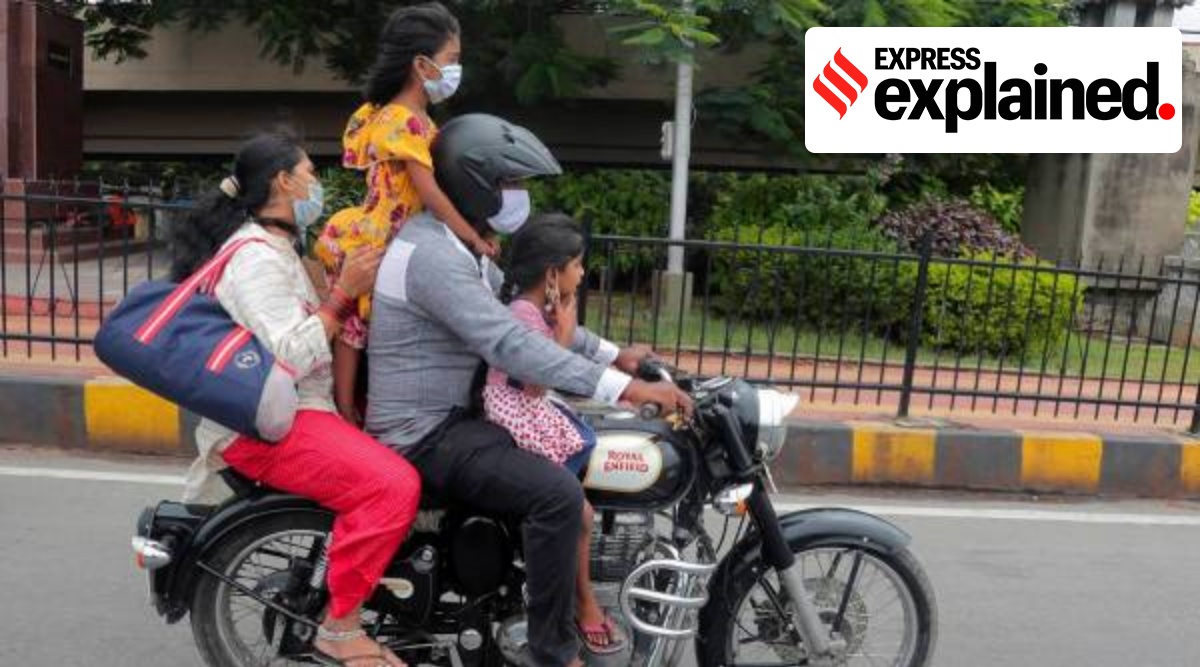This is for the first time that the government has brought out a draft notification to amend the Central Motor Vehicles Rules (CMVR), 1989, to introduce such safety provisions in the legal framework for operation of vehicles in India.
Motorcyclists may soon have to ensure that children between nine months and four years riding pillion are wearing a crash helmet or a bicycle helmet complying with relevant safety standards. They may also have to ensure sticking to speeds below 40 kmph while carrying children below four years of age.
This is for the first time that the government has brought out a draft notification to amend the Central Motor Vehicles Rules (CMVR), 1989, to introduce such safety provisions in the legal framework for operation of vehicles in India.
Why this rule?
The amended Motor Vehicle’s Act, 2019, mandated this kind of a legal provision in the rules. Now, in the CMVR, Section 136, after sub-rule 6, this new rule will be inserted.
It says that while carrying children between 0-4 years of age the rider has to ensure the child is in a harness—a contraption that attaches the pillion with the rider, so that there is no chance of the child falling off the vehicle.
Safety harness is a vest to be worn by the child, which shall be adjustable, with a pair of straps attached to the vest and forming shoulder loops to be worn by the driver. This way, the upper torso of the child is securely attached to the driver. A feature by which this is achieved is by attaching the straps to the back of the vest and crossing the straps over the vest so that two large crossing-over loops are formed that pass between the legs of the passenger.
How should the harness be?
Till the time the Bureau of Indian Standards comes out with specifications for such a harness, the Ministry of Road Transport and Highways has specified how the harness should be.
It should be lightweight, adjustable, waterproof and durable; heavy nylon/ multifilament nylon material with high density foam; and designed to hold weight upto 30 kg.
India will be one of the few countries in the world with this kind of age-specific provision for safety of children as pillion on motorcycles.
The government has held stakeholder meetings and processed multiple reports before inserting this into the Motor Vehicles Act, 2019.
How big is the problem?
In a World Health Organisation report on road safety in 2014, processed by the government, road traffic injuries have been cited as one of the 15 main causes of death of children between age 1-4 years and the second most common cause in the death of children aged between five-nine years.
According to the United States National Highway Traffic Safety Administration, per vehicle mile travelled in 2004, motorcyclists were 35 times more likely than passenger of car occupants to die in a traffic crash and eight times more likely to be injured. As per the data from the Naval Safety Centre, a motorcyclist was 20 times more likely to be injured on a motorcycle than in a car. Often, there is a connection between the rider, riding style and type of motorcycle.
There are, however, conflicting views as well.
In a 2014 research paper authored by Johns Hopkins International Injury Research Unit and IIT Delhi’s Transport Research and Injury Prevention Programme, the problem of children getting injured in motorcycle accidents was studied across the world.
After processing mortality data from 44 countries and 5 Indian cities, and hospital admissions from 17 countries, the study inferred: “The percentage of child road traffic injuries that are due to MTWs increased with increasing motorised two wheeler use, but at a much lower rate. Our findings suggest that children may be at lower risk from motorised two wheeler crashes than previously assumed, and certainly at a lower risk than as pedestrians.”
As many as 11,168 children lost their lives in road crashes in 2019 in India.
Newsletter | Click to get the day’s best explainers in your inbox
Source: Read Full Article



